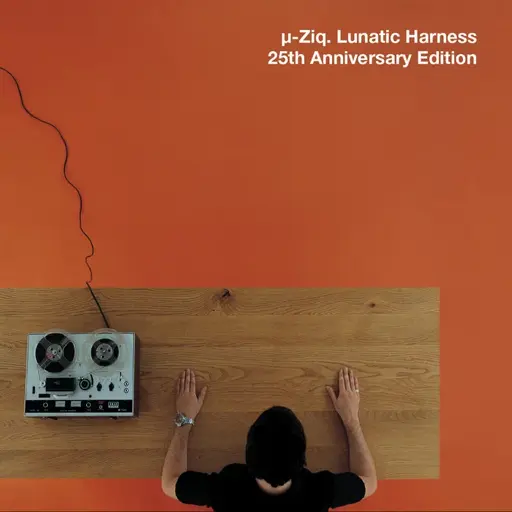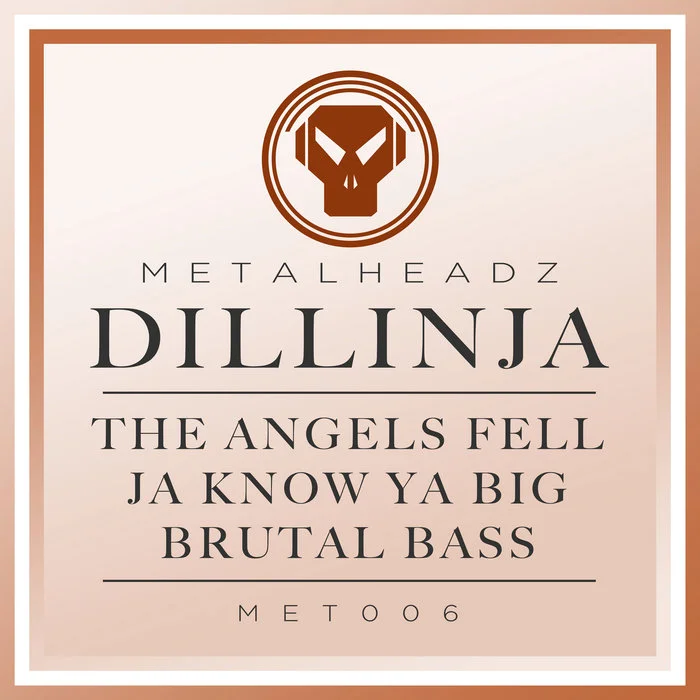SpookyVanguard64 [he/him]
- 76 Posts
- 54 Comments

 8·9 months ago
8·9 months ago@Mabbz@hexbear.net @vertexarray@hexbear.net @plantifa@hexbear.net @wtypstanaccount04@hexbear.net @notthenameiwant@hexbear.net @Zoift@hexbear.net @Octofad@hexbear.net @MolotovHalfEmpty@hexbear.net @ThePokeYen@hexbear.net @nabana@hexbear.net @LesserCacodemon@hexbear.net @PaX@hexbear.net @dj_voight_kampff@hexbear.net
Back with my usual end of year Jungle mix, except this time I decided to cover the last 5 years instead of just the last year. Also the first mix I’ve made in 6-7 months that wasn’t part of the genre guide series, aside from my Halloween mix. Hope y’all enjoy

 3·9 months ago
3·9 months ago@Mabbz@hexbear.net @vertexarray@hexbear.net @plantifa@hexbear.net @wtypstanaccount04@hexbear.net @notthenameiwant@hexbear.net @Zoift@hexbear.net @Octofad@hexbear.net @MolotovHalfEmpty@hexbear.net @ThePokeYen@hexbear.net @nabana@hexbear.net @LesserCacodemon@hexbear.net @PaX@hexbear.net @dj_voight_kampff@hexbear.net
Next part in the genre guide series, hope y’all enjoy o7
Never tried making a Drill ‘n’ Bass mix before, and I’d also never even really listened to 90s Breakcore before making this, so this was pretty cool as a learning experience for me. Also had a lot of help from a guy who’s been organizing Breakcore raves in LA since the early 2000s, both in terms of what releases & artists I should be checking out, and in terms of checking over the info on the slides.

 2·11 months ago
2·11 months ago@Mabbz@hexbear.net @vertexarray@hexbear.net @plantifa@hexbear.net @wtypstanaccount04@hexbear.net @notthenameiwant@hexbear.net @Zoift@hexbear.net @Octofad@hexbear.net @MolotovHalfEmpty@hexbear.net @ThePokeYen@hexbear.net @nabana@hexbear.net @LesserCacodemon@hexbear.net @PaX@hexbear.net @dj_voight_kampff@hexbear.net
Here’s the genre guide video I forgot to post. Hope y’all enjoy o7
Also, here’s a couple original songs I uploaded in the past couple months if anyone’s interested:

 7·11 months ago
7·11 months ago@Mabbz@hexbear.net @vertexarray@hexbear.net @plantifa@hexbear.net @wtypstanaccount04@hexbear.net @notthenameiwant@hexbear.net @Zoift@hexbear.net @Octofad@hexbear.net @MolotovHalfEmpty@hexbear.net @ThePokeYen@hexbear.net @nabana@hexbear.net @LesserCacodemon@hexbear.net @PaX@hexbear.net @dj_voight_kampff@hexbear.net
Here’s this year’s Halloween Jungle mix, hope y’all enjoy o7
Forgot to post the most recent genre guide here back when I uploaded it, so I’ll probably do that this weekend, but here’s the link to it for anyone interested: https://www.youtube.com/watch?v=xUr2AnAyFEY

 4·1 year ago
4·1 year ago@Mabbz@hexbear.net @vertexarray@hexbear.net @plantifa@hexbear.net @wtypstanaccount04@hexbear.net @notthenameiwant@hexbear.net @Zoift@hexbear.net @Octofad@hexbear.net @MolotovHalfEmpty@hexbear.net @ThePokeYen@hexbear.net @nabana@hexbear.net @LesserCacodemon@hexbear.net @PaX@hexbear.net
Newest installment in the sub-genre intro series, hope y’all enjoy o7
Next video will probably be on Breakbeat Hardcore, planning on doing a single megamix that starts around 135 bpm and works its way up to around 165 bpm.

 1·1 year ago
1·1 year agoDiscovered this track 'cause its breakbeat was sampled and used in Technical Itch - Touch The Darkness.

 2·1 year ago
2·1 year agoFor Breakcore artists to check out, Venetian Snares is probably the best one to start with. Pretty big discography and also more on the IDM side of the spectrum.
Igorrr is another good one, especially if you’re into Rock/Metal type stuff since their music heavily fuses Metal and Breakcore. There’s also Alec Empire’s album “The Destroyer,” which is what I’ve usually seen credited as being the first Breakcore album (though from what I’ve heard, Alec has become a bit of a right-wing shithead in recent years, so probably try not to give him any money if you’re gonna listen to it).

 2·1 year ago
2·1 year agoI guess the simplest way to think about it is that if stuff like Jungle & DnB are Punk Rock, then Breakcore is Hardcore Punk Rock. So yeah, more abrasive, more extreme, more chaotic & experimental, faster tempos, etc.
Breakbeat is a fairly context dependent term when it’s being used to describe musical genres tbh. It can be used as an umbrella term for any type of music that uses sampled drum breaks. I.e. Hip-Hop, Jungle, DnB, Breakcore, Big Beat, etc. are all Breakbeat genres. However, it can also be used to describe a specific sub-section of breakbeat music, usually stuff that’s more on the downtempo & midtempo side of the spectrum that doesn’t neatly fit into other genres.
Not that familiar artists who make generic Breakbeat, but I think The Chemical Brothers and The Prodigy were/are both big artists for that type of music. You could also check out The Glitch Mob’s latest album Ctrl Alt Reality, which is somewhere in between generic Breakbeat and Breakbeat Hardcore.

 4·1 year ago
4·1 year ago@Mabbz@hexbear.net @vertexarray@hexbear.net @plantifa@hexbear.net @wtypstanaccount04@hexbear.net @notthenameiwant@hexbear.net @Zoift@hexbear.net @Octofad@hexbear.net @MolotovHalfEmpty@hexbear.net @ThePokeYen@hexbear.net @nabana@hexbear.net @LesserCacodemon@hexbear.net @PaX@hexbear.net
Here’s the next part in the sub-genre intro series, hope y’all enjoy o7
Also, here’s some demos for an album I’m working on:

 4·1 year ago
4·1 year ago@Mabbz@hexbear.net @vertexarray@hexbear.net @plantifa@hexbear.net @wtypstanaccount04@hexbear.net @notthenameiwant@hexbear.net @Zoift@hexbear.net @Octofad@hexbear.net @MolotovHalfEmpty@hexbear.net @ThePokeYen@hexbear.net @nabana@hexbear.net @LesserCacodemon@hexbear.net @PaX@hexbear.net
Second part of the sub-genre intro guide series I’m working on, coving Techstep & Neurofunk this time. Next part will probably either cover Atmo Jungle/DnB or Jungle Tekno & Happy Hardcore. Hope y’all enjoy o7.

 3·1 year ago
3·1 year agoYeah. I was actually listening to Ed Rush & Optical’s album “Wormhole” for the very first time the other day, and while it’s pretty tame by the standards set by stuff that came after it, I couldn’t help but think of how wild it must have been to go from stuff like Dred Bass, Ricky, Terrorist, Maximum Style, etc. to Wormhole in only 3-4 years.

 3·1 year ago
3·1 year ago@Mabbz@hexbear.net @vertexarray@hexbear.net @plantifa@hexbear.net @wtypstanaccount04@hexbear.net @notthenameiwant@hexbear.net @Zoift@hexbear.net @Octofad@hexbear.net @MolotovHalfEmpty@hexbear.net @ThePokeYen@hexbear.net @nabana@hexbear.net @LesserCacodemon@hexbear.net @PaX@hexbear.net
Here’s what I’ve been mainly working on for the past 2 weeks, first video in a series I’m working on to follow up from the genre guide video I made a while back. Hope y’all enjoy o7
Also, here’s a Techstep/Neurofunk track I uploaded 4 weeks ago if anyone’s interested:

 1·1 year ago
1·1 year agoSometime last year or earlier this year, someone in the Jungle subreddit posted a section of a
1992/931993 issue of some underground rave music magazine from the UK, specifically a section that contained an interview with Pascal & Sponge (who were producing Breakbeat Hardcore/Jungle songs together as Johnny Jungle at the time). The interview was pretty short and not that interesting in the grand scheme of things, but the one thing that stuck with me from it was a brief line from Pascal complaining that the Amen Break was overused lol.Which is pretty incredible when you consider the historical context. IIRC the first breakbeat to be sampled & used in a song was the Apache Break all the way back in 1980. By contrast, the Amen break wasn’t first used until 1986, and only 6-7 years later it had exploded in popularity to the point that some people were already starting to get tired of it. And in the 30 years since then, it’s continued to grow in popularity to the point that most casual fans of Breakbeat, old skool Hip-Hop, Jungle, DnB, Breakcore, IDM, etc. are at least somewhat familiar with it & it’s history. The Apache Break is still easily within the top 5 when it comes to most sampled breakbeats of all time, and it has nowhere near the same level of casual recognition. Even second most sampled breakbeat, the Think Break, doesn’t come close to the Amen on that front.
Edit: Here’s the interview, and the relevant quote:
Q: Do you prefer the music of today or the stuff that was around a year ago and what do you see as the future of rave music?
A: I do prefer the music of today. I’m not sure about what the way ahead is though. I do think that everyone should stop using that Amen break because if anything is going to kill hardcore it will be that. People are going to get very tired of it. There are loads of breaks out there, it’s just that most people are too lazy to look and find them. Havibg [sic] said that I do think that the Amen breakbeat is the same for Hardcore as the bass drum is to House.

 2·1 year ago
2·1 year ago@Mabbz@hexbear.net @vertexarray@hexbear.net @plantifa@hexbear.net @wtypstanaccount04@hexbear.net @notthenameiwant@hexbear.net @Zoift@hexbear.net @Octofad@hexbear.net @MolotovHalfEmpty@hexbear.net @ThePokeYen@hexbear.net @nabana@hexbear.net @LesserCacodemon@hexbear.net @PaX@hexbear.net
New best of 2023 mix, mainly featuring Hardcore, Darkcore & Jungle Tekno, hope y’all enjoy o7
Also uploaded a couple new tracks since the last mix I posted:
- GeoCity Junglist - Welcome To Metropolis
- GeoCity Junglist - Amen Dreams VIP (WIP/demo, updated from a version I’d posted a few months ago in “Dubplates & Demos Vol. 4”)
“Welcome To Metropolis” is part of idea I had to make a fake video game OST inspired by (and frequently sampling from) 90s FPS games, though I’m also not exactly trying very hard to make all the songs work as a FPS soundtrack tbh, so the “OST” part is more of a loose thematic framing device.

 5·1 year ago
5·1 year ago@Mabbz@hexbear.net @vertexarray@hexbear.net @plantifa@hexbear.net @wtypstanaccount04@hexbear.net @notthenameiwant@hexbear.net @Zoift@hexbear.net @Octofad@hexbear.net @MolotovHalfEmpty@hexbear.net @ThePokeYen@hexbear.net @nabana@hexbear.net @LesserCacodemon@hexbear.net @PaX@hexbear.net
New best of 2023 mix, this time for Breakbeat Hardcore, Jungle & Jungle Tekno in the 140-160 bpm range. Hope y’all enjoy o7

 5·1 year ago
5·1 year ago@Mabbz@hexbear.net @vertexarray@hexbear.net @plantifa@hexbear.net @wtypstanaccount04@hexbear.net @notthenameiwant@hexbear.net @Zoift@hexbear.net @Octofad@hexbear.net @MolotovHalfEmpty@hexbear.net @ThePokeYen@hexbear.net @nabana@hexbear.net @LesserCacodemon@hexbear.net
Finally back with part 2 of the best of 2023 series, hope y’all enjoy o7
Also posted a new track last week:
It’s a free DL on SoundCloud, or pay what you want on Bandcamp.

 4·2 years ago
4·2 years agoThe inclusion of the “Close Encounters” samples is kinda funny tbh, 'cause the whole reason I even had them was to make a bootleg remix of Siamese Minds - Killer Instinct. I started working on that bootleg around 3-4 weeks before I started on Cyberia '94, but haven’t finished it yet. Then when working on Cyberia '94, I had completed the two sections before & after the ambient section with the Closer Encounters samples, but transitioning directly between them didn’t sound right.
So that whole section came about just 'cause I decided to bridge those two sections by switching into something completely different for a bit. And the thing I decided to switch into is basically just a rough recreation of a section of the intro for the Killer Instinct bootleg I’m working on (minus the drums & bass), which worked surprisingly well lol.

 5·2 years ago
5·2 years ago@Mabbz@hexbear.net @vertexarray@hexbear.net @plantifa@hexbear.net @wtypstanaccount04@hexbear.net @notthenameiwant@hexbear.net @Zoift@hexbear.net @Octofad@hexbear.net @MolotovHalfEmpty@hexbear.net @ThePokeYen@hexbear.net @nabana@hexbear.net @LesserCacodemon@hexbear.net
Here’s the first of my 2023 Jungle mega-mixes. Hope y’all enjoy o7
Would’ve liked to have made this back in December, but I had ear surgery to repair a hole in my eardrum that’s I’ve had since I was very young, which made it a bit difficult to do music related things for a few weeks. Also didn’t help that my headphones broke a week after the surgery, and I didn’t get around to replacing them until mid January lol.
I did make a couple new tunes last month though if anyone’s interested:














@Mabbz@hexbear.net @vertexarray@hexbear.net @plantifa@hexbear.net @wtypstanaccount04@hexbear.net @notthenameiwant@hexbear.net @Zoift@hexbear.net @Octofad@hexbear.net @MolotovHalfEmpty@hexbear.net @ThePokeYen@hexbear.net @nabana@hexbear.net @LesserCacodemon@hexbear.net @PaX@hexbear.net @dj_voight_kampff@hexbear.net
Back with a new mix, hope y’all enjoy o7. This is a follow up to my “Best Of Jungle 2020-2024” mix, this time focusing on the darker stuff. Was intending to make this much earlier in the year, but I’ve just been burnt the fuck out for most of this year, mainly due to trying to find a job. Still nice to finally get this off the list of things I need to do though lol.